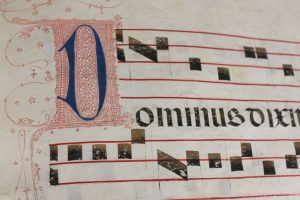by Emilia D’Agostino Pisani

The Marian Library is celebrating its 75th anniversary with events and exhibits throughout 2018. Events inspired by the Library’s rich musical holdings, feature a concert of medieval music interpreted for women’s voices and an early-music ensemble …
